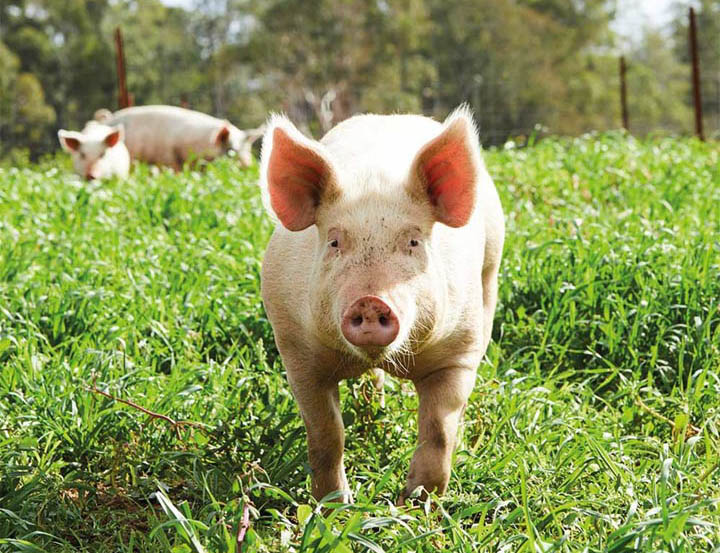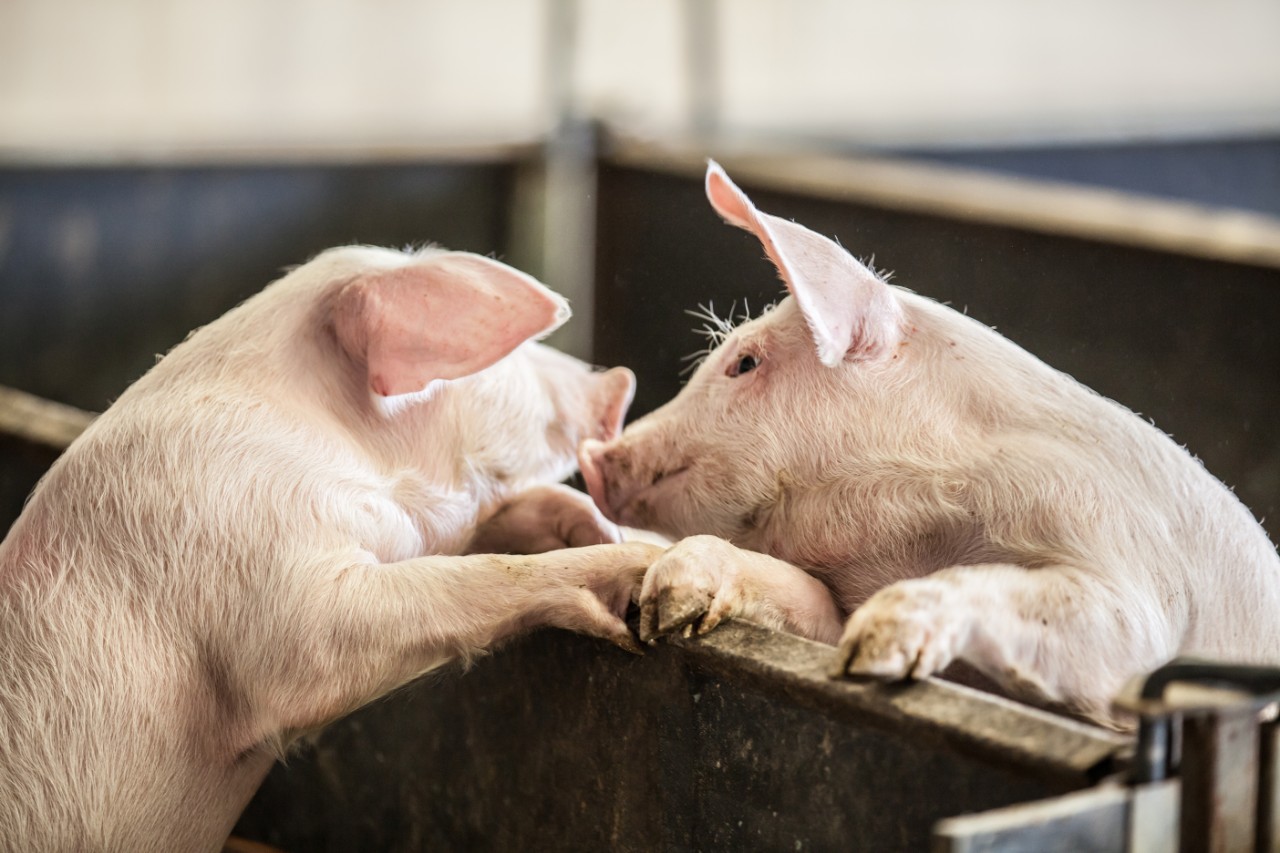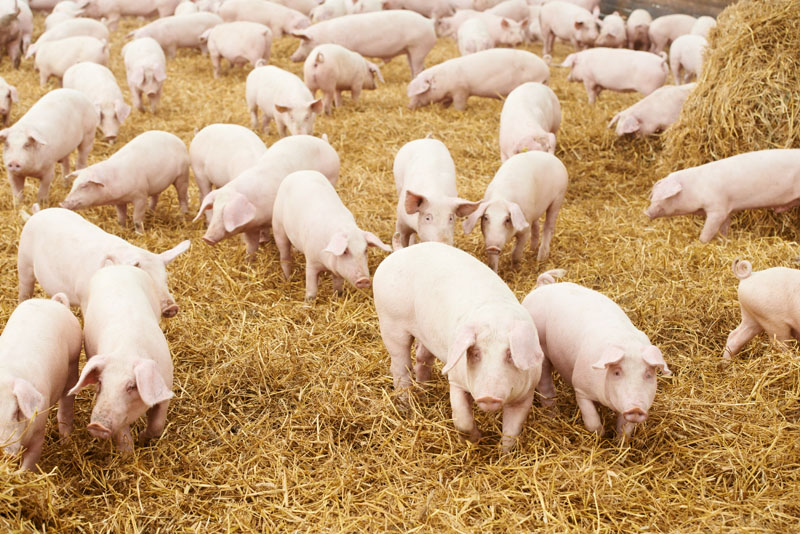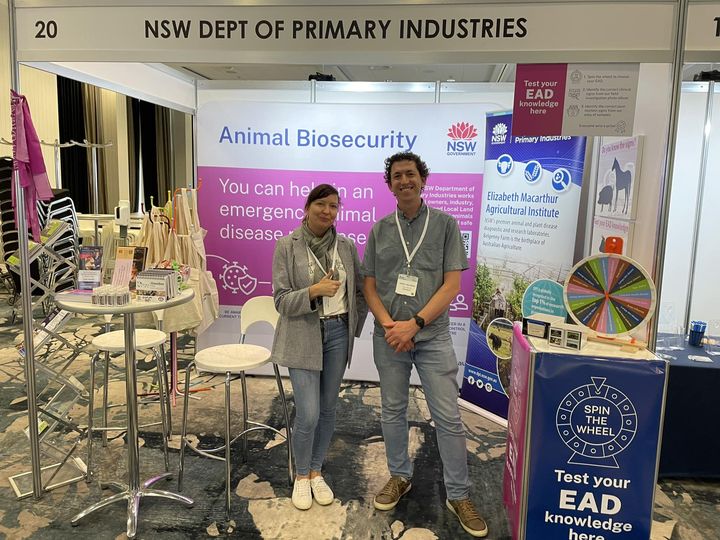Globally, pork consumption and production are anticipated to be relatively stable through 2023, however weak economic growth now being experienced across many economies could result in moderated consumer demand with an impact on pork prices despite being a relatively low cost protein.
- GVP $246 million est. Up 7% year-on-year.
- Production up 5% year-on-year to 65,000 tonnes cwt. c
- Prices up 5% and 7% for porkers and baconers respectively on the prior year.


Production
While production for 2022-23 increased in NSW from the prior year, longer term on going supply chain integration nationally has seen increased slaughter capacity in South Australia and Victoria as well as Queensland. 151 162 Since 2000 NSW production has declined, at an average compound annual rate of -3%, compared to a compound annual increase in national production of +1%. 151
Price
Pig and feed grain prices 2 13 a
- Feed wheat price index
- Eastern porker price index
Australian meat consumption and retail prices 2 24
- Beef and veal retail price
- Pork retail price
- Lamb and goat retail price
- Poultry retail price
- Beef and Veal kg cwt/capita
- Lamb and Mutton kg cwt/capita
- Pig meat kg cwt/capita
- Chicken meat kg cwt/capita
Trade
NSW Imports by Volume 35
- Netherlands
- Denmark
- United States
- Ireland
- Canada
- Other
NSW Imports by Value 35
- Netherlands
- Denmark
- United States
- Ireland
- Canada
- Other
NSW Exports by Volume 35
- Malaysia
- Philippines
- New Zealand
- Korea, South
- Vietnam
- Other
NSW Exports by Value 35
- Singapore
- New Zealand
- Philippines
- Malaysia
- Papua New Guinea
- Other
Macroeconomic Conditions
Canada’s pork production is expected to decline in the near term with the industry experiencing the closure of slaughter facilities, attributed to labour shortages, and competitive export markets with increased competition from United States and Brazil. Canada has also experienced relatively high feed prices, which have been exacerbated by recent poor cropping seasons. 79 90 In the case of Brazil, exports are expected to eclipse Canada’s in 2023, having increased 61% in volume terms since

Outlook
Global pork consumption and production are expected to be relatively stable through 2023, however weak economic growth now being experienced across many economies has the potential to moderate consumer demand.
Stronger Primary Industries Strategy
Veterinary engagement in EAD responses
Strategic Outcome

- 1.1 Lead the preparation for and prevention of future biosecurity threats

Following large-scale bushfires and floods in recent years, there is appetite from the private veterinary sector and government for clarity and consistency in this space.
This project built private veterinarians’ emergency response understanding, strengthened NSW’s animal biosecurity awareness and EAD preparedness in partnership with the Australian Veterinary Association (AVA), Vets Beyond Borders (VBB) and the NSW veterinary practitioners board (VPB).
In 2022-23 the project delivered:
- 7 private veterinarian specific EAD workshops and conferences across NSW
- 400 EAD awareness information packs delivered
- 538 EAD sampling and PPE kits distributed
- 500 places in AIIMS awareness training provided for private practitioners.


